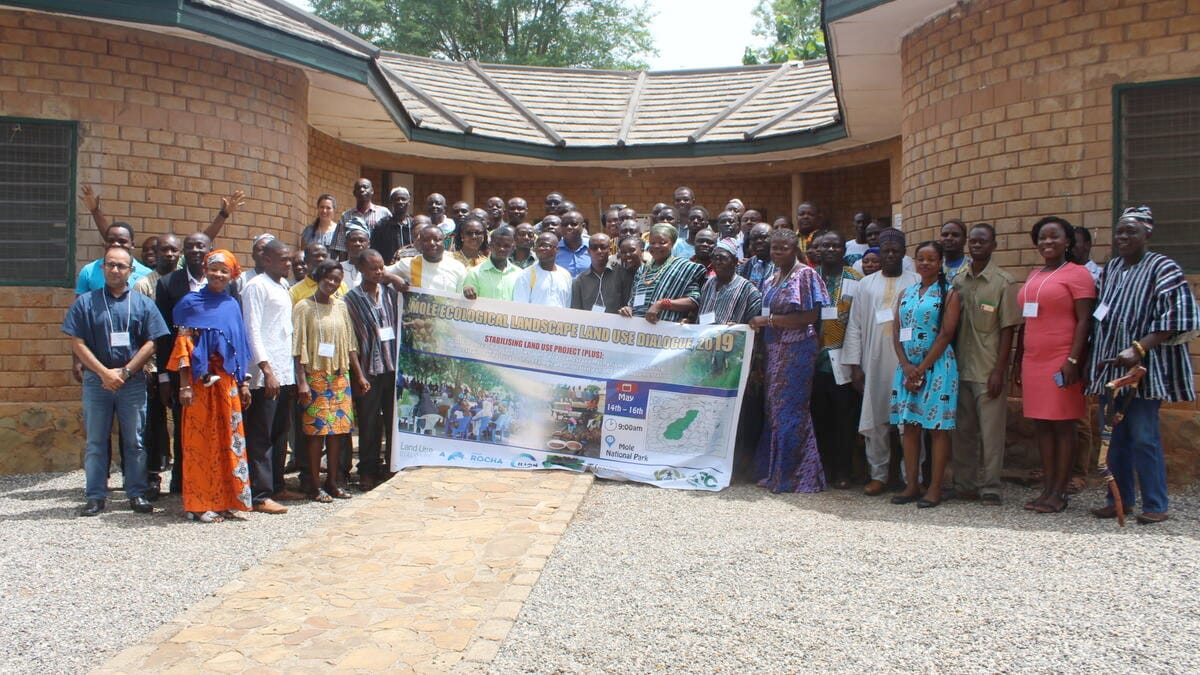Mole Ecological Landscape Land Use Dialogue

The Mole Ecological Landscape includes Ghana’s largest protected area (Mole National Park) and hosts a diverse flora and fauna dominated by Shea trees (Vitellaria paradoxa). Though previous challenges in the landscape were largely around unsustainable farming practices, road expansions in 2012 facilitated unprecedented surges in illegal tree cutting (primarily Rosewood Pterocarpus erinaceous) for timber and charcoal production. Competing land uses continue to put the landscape and the livelihoods depending on its resources at risk.
A Land Use Dialogue was held in Mole Ecological Landscape on May 14th - 16th, 2019 with key support from IUCN and A Rocha Ghana. The 82 participants included local farmers, Community Resource Management Area members (CREMAs), landscape Management Unit members (PAMAUs), traditional authorities, private sector, regional and international NGOs, and government institutions. Through dialogue, participants developed and agreed to the following landscape strategies:
- An integrated, participatory approach is necessary to be able to reduce deforestation, reduce conflict, increase the sustainability of shea butter production value chains, reconcile the different perceptions of and interests in MEL, and increase land productivity in the region for a sustainable livelihoods and ecological production;
- The landscape strategy increasingly recognizes the role of private sector actors in supporting nature-based supply chains;
- Allows inclusive representation and active participation from all genders;
- Harnesses and diversifies livelihood strategies at the local level;
- Prioritizes compliance with laws, in particular, those related to Rosewood harvesting and hunting.
